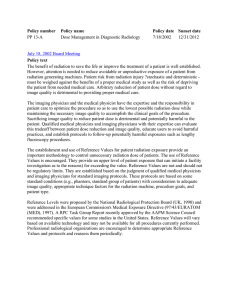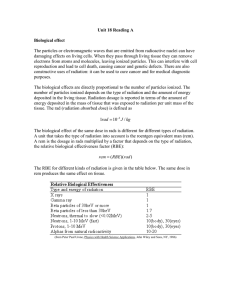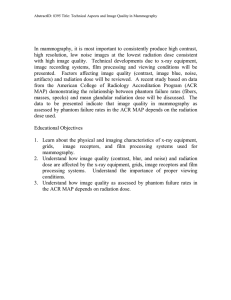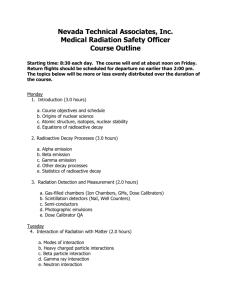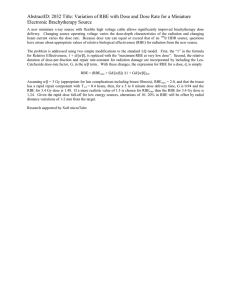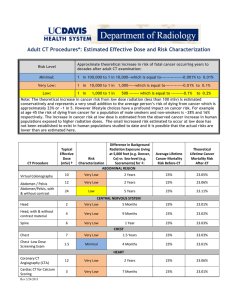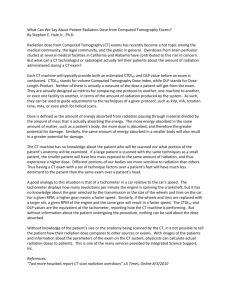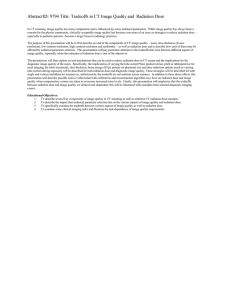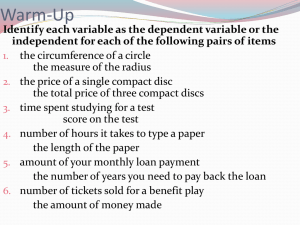Chem 1B Test 5
advertisement
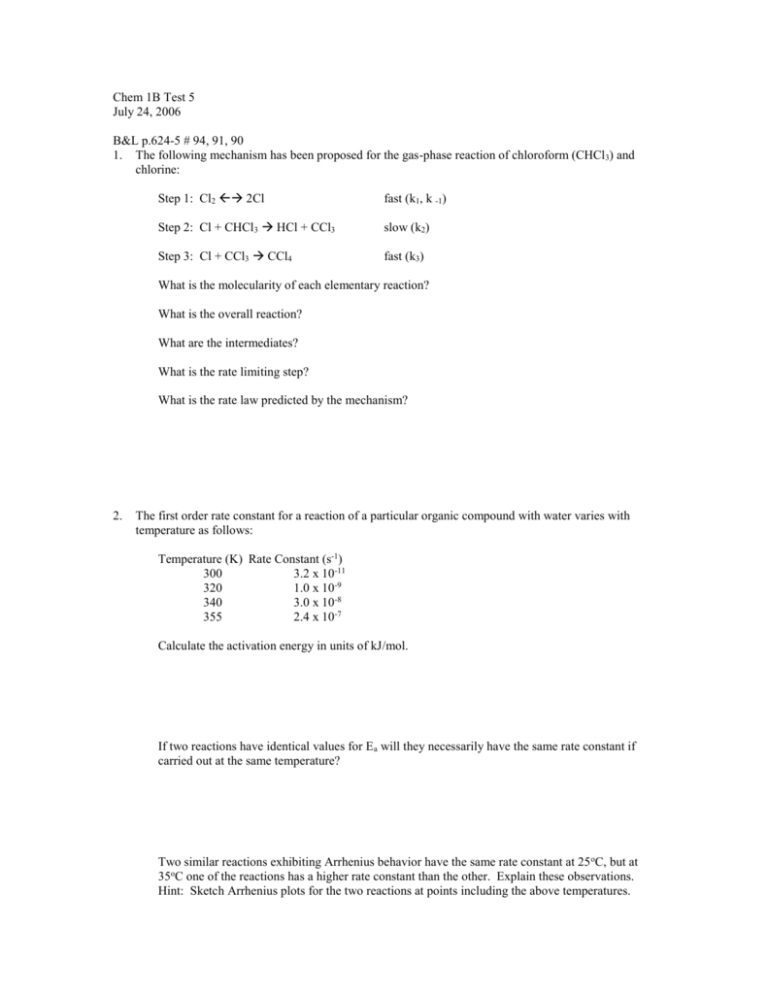
Chem 1B Test 5 July 24, 2006 B&L p.624-5 # 94, 91, 90 1. The following mechanism has been proposed for the gas-phase reaction of chloroform (CHCl3) and chlorine: Step 1: Cl2 2Cl fast (k1, k -1) Step 2: Cl + CHCl3 HCl + CCl3 slow (k2) Step 3: Cl + CCl3 CCl4 fast (k3) What is the molecularity of each elementary reaction? What is the overall reaction? What are the intermediates? What is the rate limiting step? What is the rate law predicted by the mechanism? 2. The first order rate constant for a reaction of a particular organic compound with water varies with temperature as follows: Temperature (K) Rate Constant (s-1) 300 3.2 x 10-11 320 1.0 x 10-9 340 3.0 x 10-8 355 2.4 x 10-7 Calculate the activation energy in units of kJ/mol. If two reactions have identical values for Ea will they necessarily have the same rate constant if carried out at the same temperature? Two similar reactions exhibiting Arrhenius behavior have the same rate constant at 25 oC, but at 35oC one of the reactions has a higher rate constant than the other. Explain these observations. Hint: Sketch Arrhenius plots for the two reactions at points including the above temperatures. Atkins & Jones 2nd Ed. p949 #70 p., p947 #32 &, p934 #9B, p949 #63 3. Consider the α decay of 234Pu (234.0433 amu) to 230U (230.0339 amu). How much energy is emitted in each α decay of plutonium-234? (Give answer in J and kJ/mol). The half life of 234Pu is 8.8 hours. How much heat is released by α decay of a 2.00 μg (2.00 x 10-6 g) sample of plutonium-234 in a 24 hour period? A 5.0 g sample of muscle tissue absorbs 2.0 J of energy as a result of its exposure to α radiation. Calculate the dose in rads. (1 rad = 0.01J/kg tissue) The “dose equivalent” in “rems” is the actual dose modified to take into account different destructive potentials of various types of radiation with various types of tissue. For example 1 rad of alpha radiation is about 10-20 times as destructive as 1 rad of beta radiation (even though alpha particles are least penetrating) so the “relative biological effectiveness” or RBE is about 10-20 for alpha radiation. Dose equivalent = RBE x dose. What is the dose equivalent for the above dose? 4. A sample of carbon of mass 1.00 g from the Dead Sea scrolls underwent 1.4 x 10 4 disintegrations in 20 hours. The half-life for 14C decay is 5715 years and carbon in living organisms undergoes 15.2 disintegrations per second per gram. Estimate the approximate time since the sheepskins composing the scrolls were removed from the sheep. 5. Extra: The Sun emits radiant energy at the rate of 3.9 x 10 26 J/s. What is the rate of mass loss of the Sun in kg/s?
